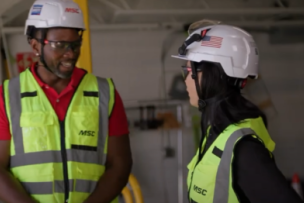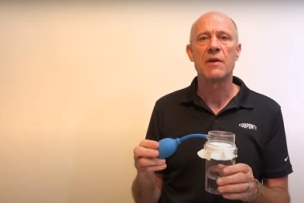OSHA requires that employers identify the appropriate PPE for various tasks and make it available to workers. This includes creating and regularly updating a PPE program, making sure PPE is well maintained and training employees in its appropriate use and care.
PPE is generally defined as equipment or clothing that is worn or held by a person at work to protect him or her from health and safety risks. These items may include gloves, safety shoes, safety helmets, eye protection, hearing protection, hand, arm and body protection, respiratory protection, high-visibility clothing and safety harnesses.
Each time a worker uses PPE he or she should inspect it for signs of wear and tear and verify its structural integrity. Are there any visible signs of wear and tear? Has the item passed its expiration date?
Take, for example, protective eyewear, which provides a barrier to airborne particles that could injure a worker’s eye. How might it be maintained? Regularly cleaning it with water and mild soap keeps it clear and usable, and using a protective case can help avoid scratches. The eyewear should be replaced if it is scratched or damaged to the point that it impairs the user’s vision.
Indeed, any defective PPE should be marked as out of service and either disposed of or not used until it is repaired.
Similarly, the cleaning, storage and replacement of PPE should be undertaken according to the manufacturer’s guidelines. Protect PPE from damage and contamination when it is stored by making sure it is in a designated area free from chemicals or extreme temperatures.
Read more: Confined Space Safety: What’s the Correct PPE, Equipment for Working in Hazardous Locations?
Performing a PPE Inspection
Performing a visual and manual inspection (by touch) of your PPE before using it is important.
Take, for example, a safety harness, which is a common type of PPE that is combined with another fall protection element—such as a shock-absorbing lanyard—to protect workers from injury when they are working at height.
According to OSHA, employees working at 4 feet or higher in general industry—and 6 feet or higher in construction—are at risk of serious injury or even death if they fall. Employers must provide the correct safety harnesses and lanyards to protect them.
To ensure the harness is in good working order, begin by grasping the webbing with both hands and bending it, checking both sides. Doing so “creates surface tension making damaged fibers or cuts easier to see,” notes safety gear provider Honeywell in its Product Inspection Guide. Damage to the webbing may be the result of a fall and may not be immediately obvious from a simple visual inspection, which is why manually inspecting the harness by touch is important.
Next, check the harness’s condition for overall deterioration. Look for:
- Cuts, nicks or tears
- Broken fibers, cracks, excessive hardness or brittleness, or burnt, charred or melted fibers, which may indicate heat damage
- Missing straps
- Undue stretching (indicates a possible fall)
- Material marked with a permanent marker
- Modifications by previous users
- Damaged stitching
On the hardware side (this includes items such as buckles, or the D-ring), check for:
- Distortion (twists, bends)
- Rough or sharp edges
- Rust, corrosion, cracks or breaks
- Broken or distorted grommets
- A tongue buckle that overlaps the buckle frame and moves freely back and forth in its socket
- A tongue buckle roller that turns freely on frame
- All springs are in working condition
Honeywell recommends placing a legible tag on all harnesses to identify them. The tag should include the item’s model number, date of manufacture, name of the manufacturer, plus the product’s limitations and any warnings.
This information will let the user know if a harness should be removed from service. It should certainly be removed if the tagging system is missing or not legible.
When storing the harness, wipe off any dirt with a sponge using plain water and mild detergent and wipe dry with a clean cloth. Next, hang the harness where it can dry freely. As with all PPE, always follow the manufacturer’s guidelines for maintenance and storage.
There’s little doubt that not inspecting or maintaining your PPE and safety equipment means there’s a higher likelihood it won’t work when it’s most needed. And that can lead to lost time and money in the form of worker absence, compensation payouts and potential regulatory fines.
Read more: How to Care for Fall Protection Harnesses
How do you ensure your workers understand the proper maintenance and care of PPE? Share your thoughts in the comments below.




Talk to Us!
Leave a reply
Your email address will not be published. Required fields are marked *